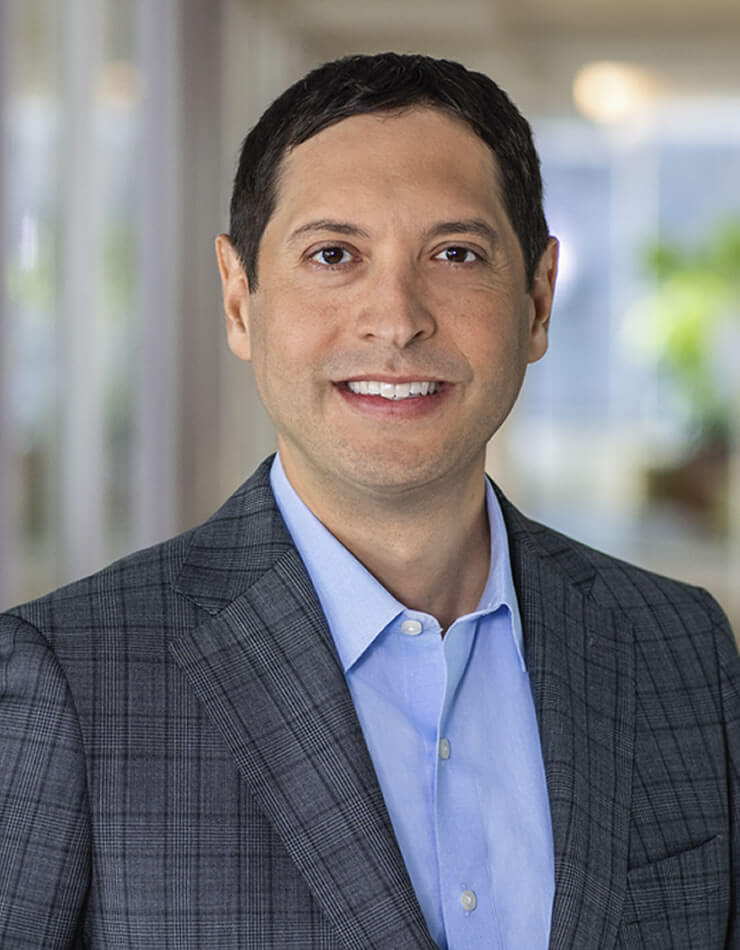Oakmark Select Fund – Investor Class
Average Annual Total Returns 12/31/22
Since Inception 11/01/96 10.75%
10-year 8.35%
5-year 1.93%
1-year -22.74%
3-month 4.66%
Expense Ratio: 0.98%
Expense ratios are as of the Fund’s most recent prospectus dated January 28, 2022, as amended August 1, 2022 and October 1, 2022; actual expenses may vary.
Past performance is no guarantee of future results. The performance data quoted represents past performance. Current performance may be lower or higher than the performance data quoted. The investment return and principal value vary so that an investor’s shares when redeemed may be worth more or less than the original cost. To obtain the most recent month-end performance data, view it here.
The Oakmark Select Fund generated a 4.7% return in the fourth quarter compared to 7.6% for the S&P 500 Index. For the full year 2022, the Oakmark Select Fund returned -22.7% compared to -18.1% for the S&P 500. While we are disappointed with the relative performance of the Fund during this market downturn, we believe that the lower and more widely dispersed valuations in the market today have allowed us to redeploy capital into increasingly attractive investments. We are optimistic that these decisions will sow the seeds of future outperformance. As always, we remain focused on building a high-conviction portfolio of undervalued businesses that we believe will provide both a margin of safety and the potential for attractive risk-adjusted returns over the long term.
In the fourth quarter, the largest contributing sectors were financials and energy while the largest detracting sector was consumer discretionary. The largest individual contributors were Netflix and our new holding, Oracle Corporation. The largest detractors were Amazon, Warner Bros. Discovery and Meta Platforms.
For the calendar year, the largest contributing sectors were energy and information technology while the largest detractors were communication services and financials. The largest individual contributors were EOG Resources, APA Corp. and Oracle. The largest detractors were Meta Platforms and Alphabet.
During the fourth quarter, we initiated new positions in Intercontinental Exchange and Oracle and eliminated positions in Lear, AIG and Meta. While we continue to believe that these eliminated positions are undervalued, they are no longer among our highest conviction ideas. We also sold some of our position in Charter Communications to purchase a new position in Liberty Broadband. We continue to see significant value in Charter shares and view Liberty Broadband as a tax-efficient way to own Charter at a discount. We take into consideration tax efficiency of the Fund to help maximize after-tax returns. We are happy to report this approach resulted in no annual capital gains distribution in 2022.
Oracle Corporation
The sell-off in the software sector provided us with an opportunity to purchase shares of Oracle this quarter. Although investors have generally admired Oracle’s stability and its strong customer relationships, they have also viewed it as a slower growth software company. We believe Oracle’s reported financial results have been depressed in recent years by its transition to the cloud, the benefits of which are finally becoming visible. Oracle’s cloud-based application businesses are now growing 25-30% organically, and its cloud-based infrastructure businesses are growing even faster. As these businesses have become a larger percentage of revenue, the company’s overall growth has also accelerated. In our view, the stock price does not yet reflect this stronger growth outlook and the shares are undervalued today at just 14x our estimate of normal earnings.
Intercontinental Exchange
Intercontinental Exchange is one of the largest and most successful financial exchange operators. The company was created through a series of shrewd acquisitions under founder and CEO Jeff Sprecher. We believe Sprecher is an excellent CEO with a history of astute capital allocation and an ability to adapt to opportunities and competitive threats. Today, Intercontinental Exchange competes in three primary segments: exchanges, fixed income/data services and mortgage technology. We believe each of these businesses exhibits attractive economic characteristics and will grow earnings faster than GDP over time. Investors today are concerned about Intercontinental Exchange’s mortgage segment as rising interest rates have depressed origination volumes. We agree that segment results will be pressured in the near term, but we believe that originations will eventually revert toward historical norms. Adjusting for this cyclicality, Intercontinental Exchange trades at a discount to the S&P 500 P/E multiple. We are happy to buy this above-average business at a below-average price.
Liberty Broadband
Liberty Broadband owns GCI, the primary cable provider in Alaska, and a 30.3% stake in Charter Communications. We believe that Liberty Broadband is trading at a material discount to its asset value today and that, by owning the shares, we are effectively recreating our Charter position at a discount. Liberty’s management team is taking advantage of this discount by repurchasing shares, and we would not be surprised to see the discount ultimately reduced or eliminated through a transaction with Charter.
As always, we thank you for investing alongside us in the Oakmark Select Fund.
The securities mentioned above comprise the following preliminary percentages of the Oakmark Select Fund’s total net assets as of 12/31/2022: AIG 0%, Alphabet Cl A 8.6%, Amazon.com 4.0%, APA 2.4%, Charter Communications Cl A 3.8%, EOG Resources 3.6%, Intercontinental Exchange 4.3%, Lear 0%, Liberty Broadband Cl C 2.5%, Meta Platforms 0%, Netflix 3.9% and Oracle 6.8%. Portfolio holdings are subject to change without notice and are not intended as recommendations of individual stocks.
Access the full list of holdings for the Oakmark Select Fund as of the most recent quarter-end.
The price to earnings ratio (“P/E”) compares a company’s current share price to its per-share earnings. It may also be known as the “price multiple” or “earnings multiple”, and gives a general indication of how expensive or cheap a stock is. Investors should not base investment decisions on any single attribute or characteristic data point.
The S&P 500 Total Return Index is a float-adjusted, capitalization-weighted index of 500 U.S. large-capitalization stocks representing all major industries. It is a widely recognized index of broad, U.S. equity market performance. Returns reflect the reinvestment of dividends. This index is unmanaged and investors cannot invest directly in this index.
Because the Oakmark Select Fund is non-diversified, the performance of each holding will have a greater impact on the Fund’s total return, and may make the Fund’s returns more volatile than a more diversified fund.
The stocks of medium-sized companies tend to be more volatile than those of large companies and have underperformed the stocks of small and large companies during some periods.
The information, data, analyses, and opinions presented herein (including current investment themes, the portfolio managers’ research and investment process, and portfolio characteristics) are for informational purposes only and represent the investments and views of the portfolio managers and Harris Associates L.P. as of the date written and are subject to change and may change based on market and other conditions and without notice. This content is not a recommendation of or an offer to buy or sell a security and is not warranted to be correct, complete or accurate.
Certain comments herein are based on current expectations and are considered “forward-looking statements”. These forward looking statements reflect assumptions and analyses made by the portfolio managers and Harris Associates L.P. based on their experience and perception of historical trends, current conditions, expected future developments, and other factors they believe are relevant. Actual future results are subject to a number of investment and other risks and may prove to be different from expectations. Readers are cautioned not to place undue reliance on the forward-looking statements.
All information provided is as of 12/31/2022 unless otherwise specified.







